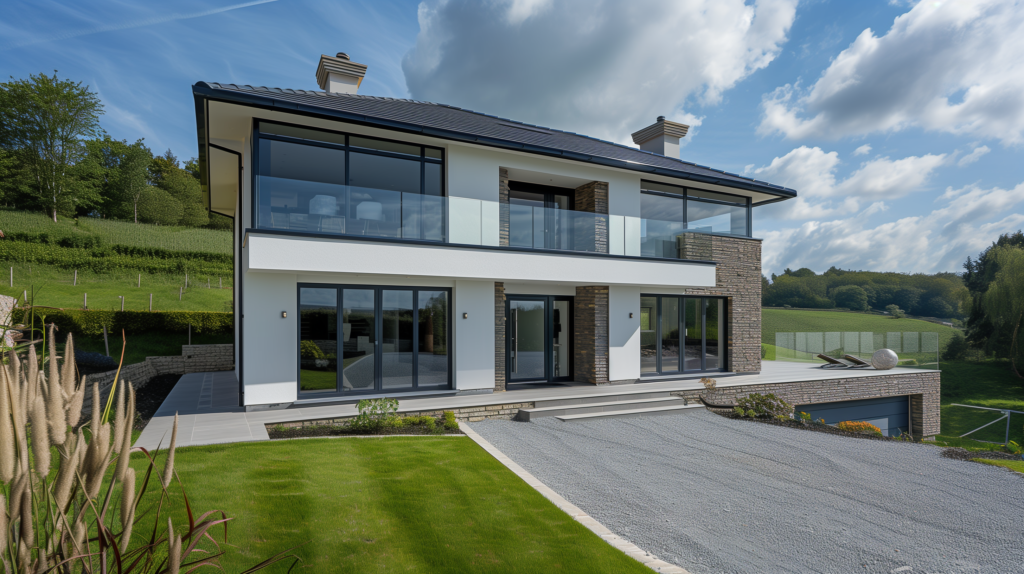Energy Efficient Windows: Exploring Thermal Break Technology

In an era when energy efficiency is not just a buzzword but a necessity, the building industry constantly seeks innovative solutions to reduce energy consumption. One such breakthrough is thermal break technology in windows, a pivotal advancement that curbs energy wastage and enhances building sustainability. This article delves into how thermal break technology functions, its benefits, and its significant impact on building sustainability.
Understanding Thermal Break Technology
Thermal break technology integrates non-conductive materials between conductive materials within the window frame. Typically, windows are made of materials like aluminium, which, while robust and aesthetically pleasing, are excellent conductors of heat. Heat can quickly transfer through the frame in conventional windows, leading to energy losses.
A thermal break disrupts this heat transfer. It is a section of low thermal conductivity material placed between the inside and outside sections of the frame. Common materials used for thermal breaks include polyamide, a type of plastic highly effective at insulating against heat transfer.
How Thermal Breaks Enhance Energy Efficiency
Reduced Heat Transfer: By inserting a thermal break within the window frame, the pathway for heat conduction is interrupted. This significantly reduces the heat that passes through the window frame from the inside to the outside of a building or vice versa.
Improved Insulation: Thermal breaks improve the overall U-value of windows, which measures how well a window prevents heat from escaping. A lower U-value indicates better insulation properties. For example, Arkay Windows' ALUK 58BW HI offers U-values from 1.2 W/m²K, showcasing superior insulation capabilities.
Enhanced Comfort: By minimising heat loss during winter and reducing heat gain during summer, thermal break windows maintain a more consistent indoor temperature. This contributes to energy savings and enhances the comfort of building occupants.
Benefits of Energy Efficient Windows
The integration of thermal break technology in windows provides a myriad of benefits that go beyond just energy savings:
Energy Savings: One of the most direct benefits is reducing heating and cooling costs. With better insulation, buildings require less energy to maintain comfortable indoor temperatures, leading to substantial savings on energy bills.
Sustainability: Reduced energy consumption directly correlates with lower greenhouse gas emissions. Buildings equipped with thermal break windows contribute to a reduction in carbon footprint, aligning with global sustainability goals.
Condensation Control: Thermal breaks help in reducing condensation on window frames. Condensation can lead to problems such as mould growth and frame damage. Thermal breaks mitigate the risk of condensation by keeping the window frame's interior surface warmer.
Acoustic Insulation: Besides thermal benefits, thermal breaks also improve acoustic insulation. The non-conductive material disrupts sound waves, making interiors quieter by reducing external noise infiltration.
Aesthetic and Functional Versatility: Modern thermal break windows are designed to meet diverse architectural needs without compromising aesthetics. With options like Arkay's InfiniLIGHT® frameless roof lights that combine exceptional performance with stunning aesthetics, buildings can achieve energy efficiency and visual appeal.
Case Studies and Practical Applications
Several case studies highlight the transformative impact of thermal break technology in real-world applications:
Residential Buildings: Thermal break windows significantly lower heating and cooling costs in residential settings. Homes retrofitted with these windows report notable improvements in energy efficient windows and indoor comfort.
Commercial Spaces: In commercial buildings, thermal break windows contribute to achieving energy certifications like LEED (Leadership in Energy and Environmental Design). These certifications demonstrate a building's commitment to sustainability and enhance its market value and appeal.
High-Performance Projects: Projects like the SCHÜCO AWS 70 HI WINDOWS in high-end residential developments illustrate how thermal break technology supports expansive glass installations without compromising thermal efficiency.
The Future of Thermal Break Technology
The future of thermal break technology in energy efficient windows is promising, with ongoing advancements poised to enhance energy efficiency and sustainability further. Innovations in materials science may lead to even more effective thermal barriers, while integration with innovative window technologies could provide dynamic control over heat and light transmission.
Moreover, as regulatory standards for energy efficiency become more stringent, the adoption of thermal break windows is expected to rise. Building codes increasingly demand higher insulation standards and thermal break technology is well-positioned to meet these requirements.
Conclusion
Thermal break technology represents a pivotal advancement in the quest for energy-efficient and sustainable buildings. Energy efficient windows stand out as a vital component in modern construction by effectively reducing heat transfer, improving insulation, and providing additional benefits such as acoustic insulation and condensation control.
For architects, builders, and property owners, investing in energy efficient windows is a strategic decision that pays off through reduced energy costs, enhanced occupant comfort, and a smaller environmental footprint. As we move towards a future where sustainability is paramount, thermal break technology will undoubtedly play a crucial role in shaping the built environment.